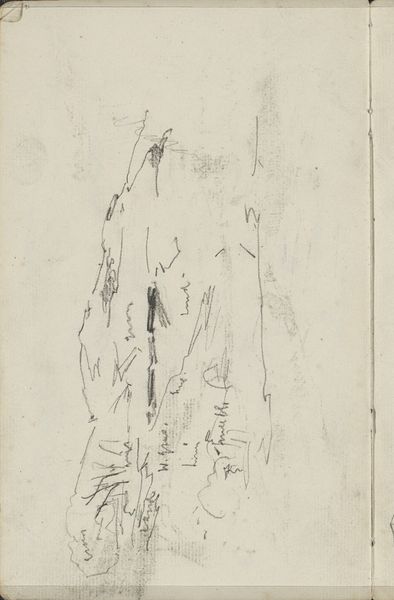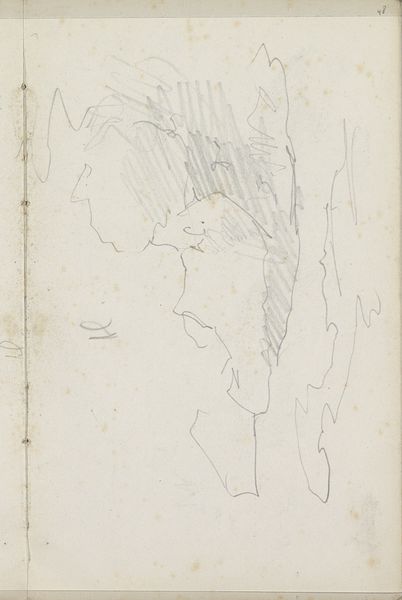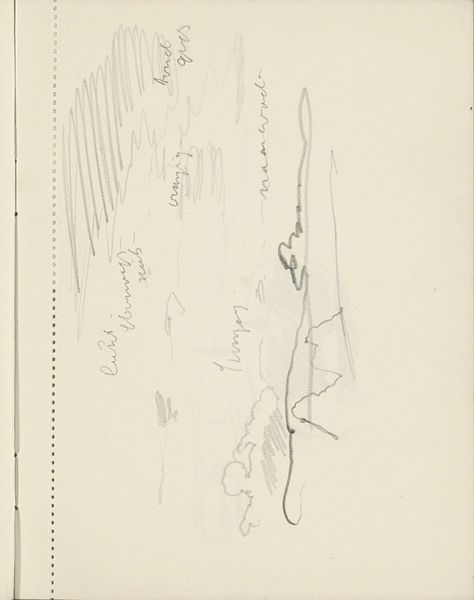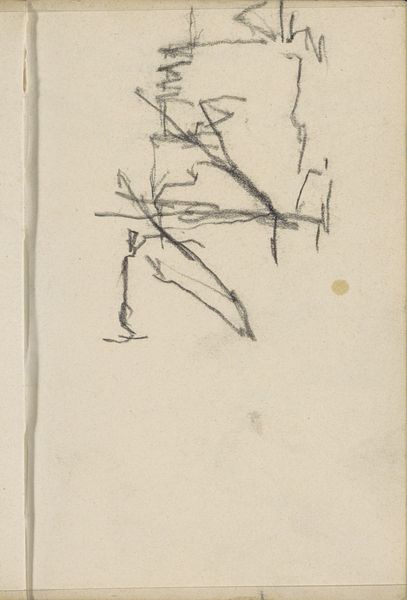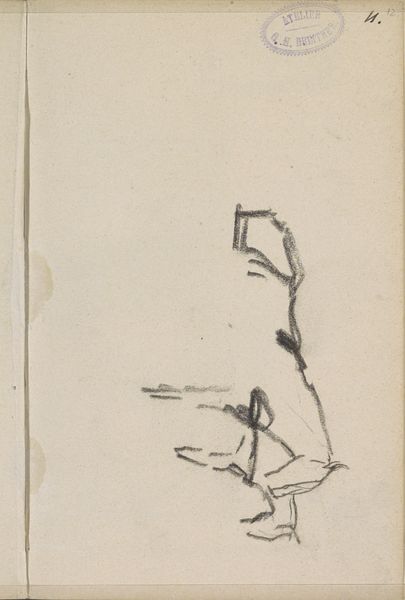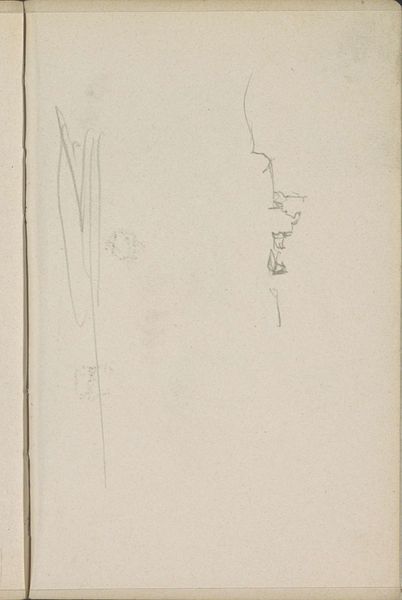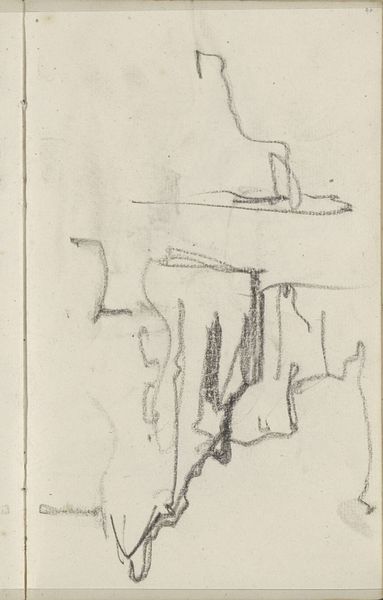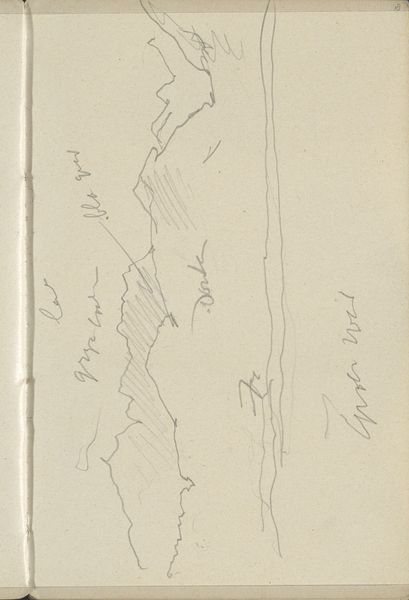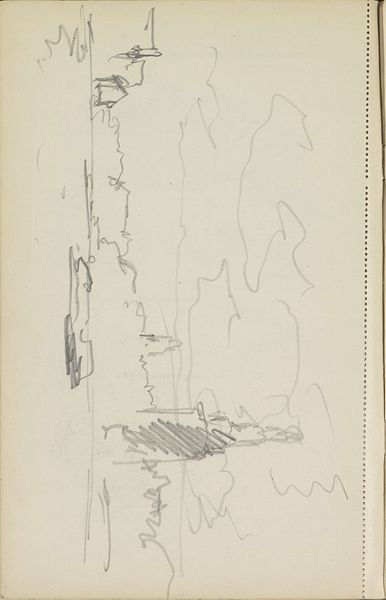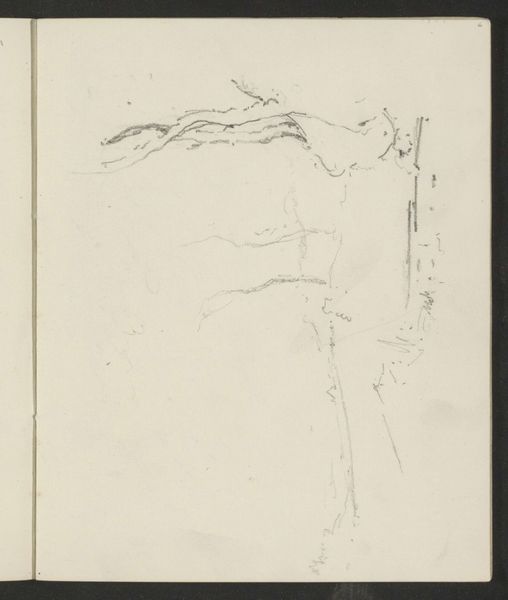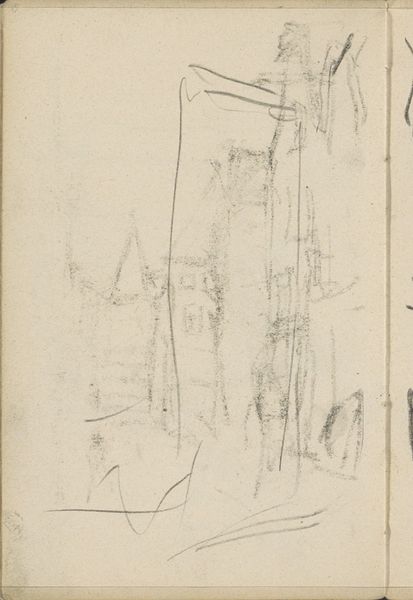
Gebouwen, mogelijk aan de Nieuwe Teertuinen te Amsterdam 1896 - 1914
0:00
0:00
georgehendrikbreitner
Rijksmuseum
Copyright: Rijks Museum: Open Domain
Curator: George Hendrik Breitner created this pencil drawing on paper sometime between 1896 and 1914. It's titled "Gebouwen, mogelijk aan de Nieuwe Teertuinen te Amsterdam," which translates to "Buildings, possibly at the Nieuwe Teertuinen in Amsterdam". Editor: My initial impression is starkness. It feels incredibly immediate and raw. The pencil lines are so sparse, they barely suggest the buildings, leaving so much to the imagination. Curator: Breitner was known for capturing the atmosphere of Amsterdam. This sketch offers an interesting insight into his process. We see the rapid, almost frantic capturing of the urban environment. Consider how this quick sketch, with minimal strokes, manages to evoke a strong sense of place. Editor: Absolutely. And those choices, those rapidly sketched lines, tell us something about the conditions of its making. This wasn't labored over; it feels like a snapshot, recorded quickly. The paper itself is so unadorned; it makes me think of the artist grabbing whatever was at hand to capture a fleeting moment. Curator: Indeed. Breitner aimed to document modern life without idealization, which often positioned him in opposition to established artistic circles. The spontaneity and honesty in this piece challenge academic notions of formal perfection, reflecting a broader cultural shift towards realism in art. Editor: And it’s worth noting the probable economic context. Drawing supplies were more readily available, more affordable. The accessibility of these materials opened up new possibilities for artists to document the world around them, especially working-class areas and the rapid industrial changes in cities like Amsterdam. Curator: It's tempting to imagine Breitner on location, perhaps a little removed from the daily routines, making quick marks. This approach speaks to a sense of artistic detachment and engagement with modernity. It moves from documenting buildings and focuses more on the fleeting moods of urban existence. Editor: I agree. This isn't about celebrating grand architecture, but it acknowledges a working area as an ordinary landscape in the world. Breitner doesn't appear to beautify the reality of this city edge or what it may entail in the way of working conditions. It invites the viewer to reconsider beauty by seeking to render all corners visible in its society. Curator: I think by engaging this image with its social framework we find that it moves us to see not just Amsterdam but a broader range of historical settings anew. Editor: And considering how rapidly constructed it appears, this offers an unvarnished sense of immediacy of perception, its material simplicity mirroring the scene itself.
Comments
No comments
Be the first to comment and join the conversation on the ultimate creative platform.

